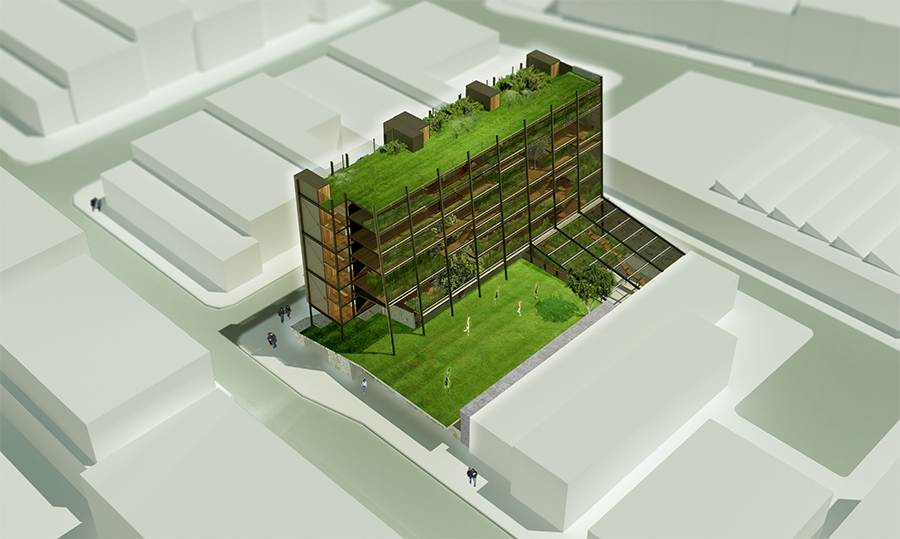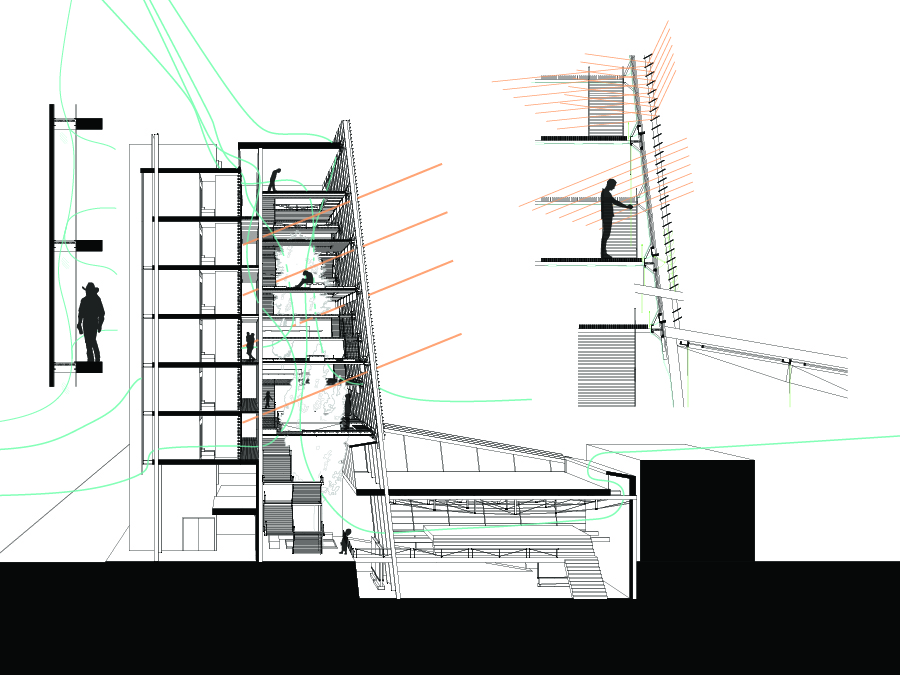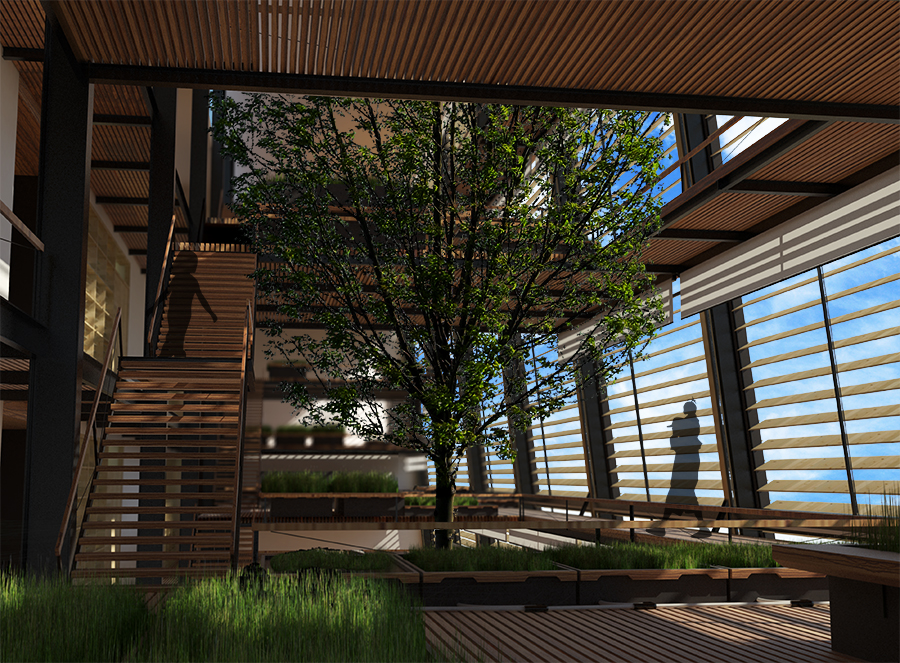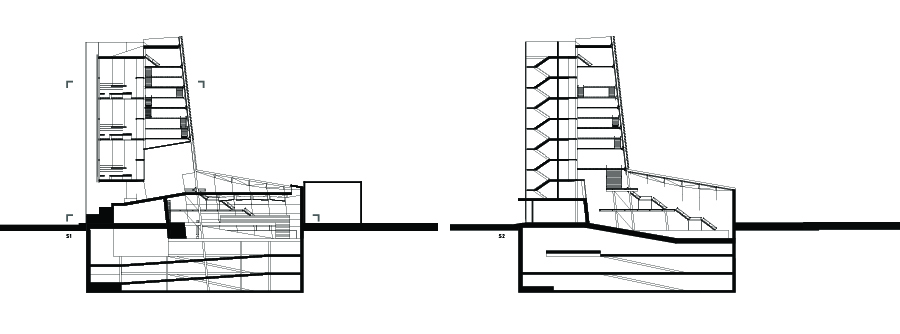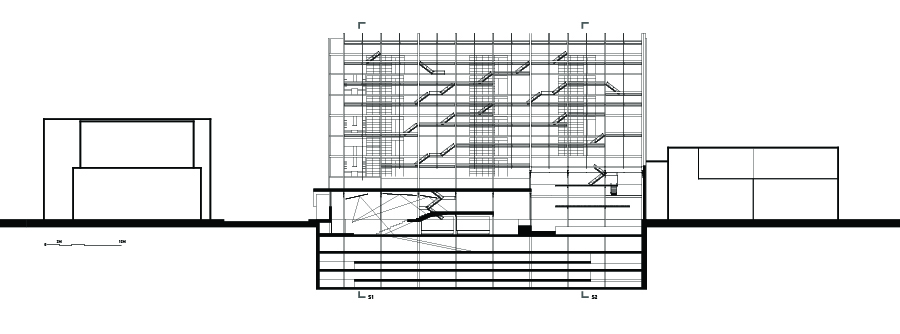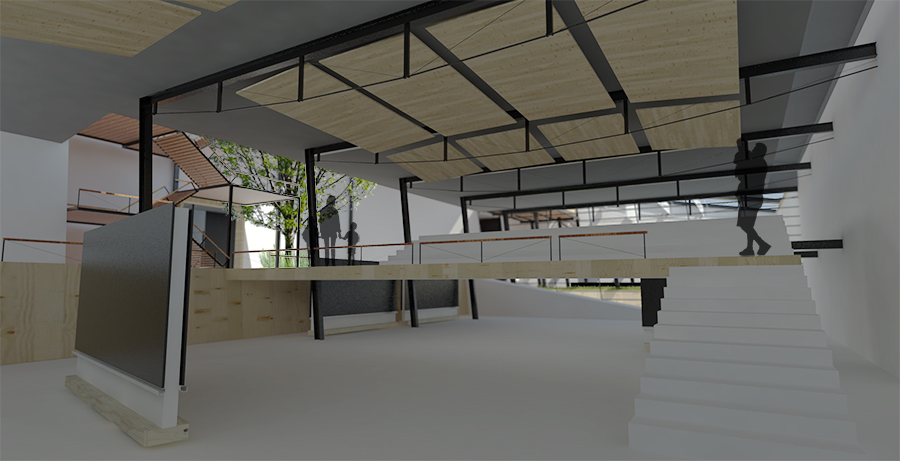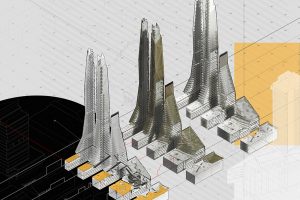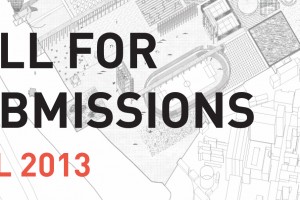Monday and Thursday are studio days. On these days in particular, the third floor undergraduate studio is filled with a frenetic energy of design, research and exploration. Students can usually be found talking excitedly with design professors and classmates in a habitat saturated with trace sketches, study models and empty coffee cups. Every Monday we’ll share a completed project, churned out from this energetic studio environment.
Arch 292 / Adrian Blackwell studio coordinator
The Great Domestic Revolution
Project Brief
In Ontario, Neoliberalism has ushered in the dismantling of Federal and Provincial public housing programs. In place of a rational program, new forms of housing have emerged: basement apartments in single family houses, extended families crowding into apartments designed for nuclear families, and rentals in empty condominiums purchased as investment properties.
For this studio we will begin with a series of contemporary situations which threaten to change the physical arrangement of the home, and which have mostly been ignored, normalized, or addressed in superficial ways:
1. An economic crisis perpetuated by a specific form of housing finance – the mortgage (literally death-grip).
2. Political crises in the concepts of both private and public space.
3. An environmental crisis instigated by the specific lifestyles we have chosen.
4. A globalized world transformed by accelerated movements of immigration.
5. The rationalization and atomization of everyday life through the rise of personal computing.
In this studio we will explore what this new person can do? What are her capabilities? How can contemporary housing expand rather than limit these possibilities. What this situation requires is what Dolores Hayden named a “Grand Domestic Revolution.”
The studio problem is to design new housing for 50 people on one of three sites in Cambridge: downtown Galt, an Industrial building and a rural arterial road. The goal of the studio is to develop new ways of living with others through the creation of new housing types and imagining new ways of assembling them in relation to the urban, suburban and rural landscapes that surround them.
Project by Jake Read / 2A
Design Statement
How can architecture create a stronger connection between building and occupant, and as a result develop community through spatial relations? The building houses a school at ground level, as well as park space integrated on rooftops and throughout a vertical greenhouse, arranged in split-level to encourage common ownership.
I believe that people seek to lead more involved lives. In the coming decades the case will be made for urban farming: go vertical and grow locally. To farm at a reasonable scale cooperation is involved – and this is not a new thought. Does it mean that we move from automated building systems to a heuristic, manually operated envelope?
“Architecture does not build humanity, it celebrates humanity” – Renzo Piano


